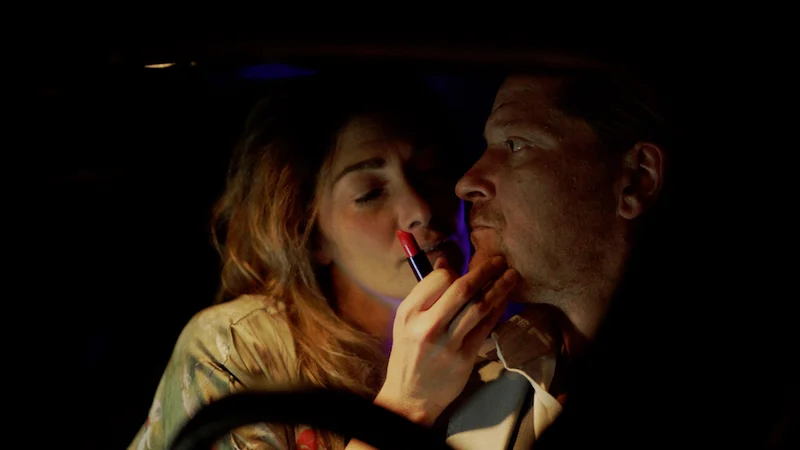For a man whose personal mission has been to “build bridges through cinema,” as he told La Repubblica newspaper in an interview just published this week, his latest film may prove the most important peace-making link yet.
Read MoreMy hacks for learning to love Yorgos Lanthimos' 'Kinds of Kindness' -- a quick review
Hint: it’s a film all about reinvention, rebirth but also the dynamics of control.
Read MoreDisney's 'Elemental' review
We can probably all remember the first Disney film we ever watched….
Read MoreA still from ‘Liborio’ by Nino Martínez Sosa
Island Life: 'Liborio' and 'I Comete' are both must-watch titles at IFFR
Two films play at this year’s International Film Festival Rotterdam that will make you yearn to a visit to an island. Any island…
Read More'The Image Book' at IFFR: Watching cinema as God(ard) intended it
I’d read the reviews, both out of Cannes where the film premiered, and lately for its US release. A.O. Scott’s was my favorite for the NY Times, as it usually is. Then, I’d listened to friends — some admitted to breaking down after viewing the film, some pointed to the filmmaker’s problematic mishmosh of the Arab world with Iranian images.
But having missed ‘Le livre d’image’ (‘The Image Book’) at the Festival de Cannes, I had to view it for myself. And, it turns out, I did well to wait.
Read MoreEmilia Derou Bernal and Julien Debard in a still from Anaïs Volpe’s ‘Indemnes’
Anaïs Volpé's 'Indemnes' reinvents the palette of tragedy at the International Film Festival Rotterdam
How do you personally survive tragedy, when it hits close to home?
It’s a question that has played in my mind over and over in the last few months. Each of us has a distinct and very human way of dealing with personal tragedy, and none of it is wrong or right, I’ve figured out. It just is.
Filmmaker Anaïs Volpé says that her way of coping with terrorist attacks, which have hit very close to home, literally for the Parisian, is to turn blood into glitter and imagine that the victims have gone to a better place. We hear that time and time again, “they have gone to a better place now,” but in Volpé’s exquisite ‘Indemnes’ (which translates to “Unharmed”) that better place is filled with color, beauty, peace and harmony. It’s a beautiful view into the afterlife, complete with stylish golden jackets, from an artist who has had her own creative style from the get-go.
Read MoreThe Trieste Film Festival turns 30 this year and in this edition teaches us the trouble with walls
The Italian city of Trieste has always had its own particular history. From its Austro-Hungarian and Slovenian influences, to its proximity to the Croatian border, its people have enjoyed a special status. At the end of the 19th Century, Trieste had more Slovenian inhabitants than Slovenia's capital of Ljubljana and at the start of the 20th, great luminaries and intellectuals like James Joyce, Italo Svevo, Sigmund Freud, Zofka Kveder, Dragotin Kette, Ivan Cankar, Scipio Slataper, and Umberto Saba frequented the bustling cosmopolitan city.
To me, it has always been a city with a foot deeply planted in its Italian roots yet the other striding towards its Eastern European culture. A bridge city overlooking a port, filled with people of different ethnicities and speaking several languages and dialects. A utopia for the perfect world, a place where everyone truly, and mostly could get along. And have gotten along.
We have so much to learn from the city of Trieste these days.
Read MoreNanni Moretti's 'Santiago, Italia': Even as a documentary filmmaker, Moretti overwhelms with his vision
I’ll admit straight away, I’m partial to Nanni Moretti’s art. I adore his style and his films have inspired various stages of my life. In fact, I find myself reconnected to my Italian roots so deeply thanks to him.
But I did go to watch his latest, the documentary ‘Santiago, Italia’ with a grain of skepticism. I mean, Moretti proved he’s capable of making a kind of documentary many years ago, in 1998 to be exact, with the reality based ‘Aprile’. But could he hold my interest for 80 minutes with an archival film based about the coup in Chile, the original horrors of a September 11th which came long before our US one, and left their fairly elected president dead, with many other tortured and missing?
Read MoreAgnès Varda and JR on the road
'Faces, Places' in Cannes: “It’s the Miracle of Cinema!” -- Agnès Varda and JR Bring Us ‘Visages, Villages’
“Did you like our little film?”
Agnès Varda grabs my hand and holds it between hers as I try to exit the room where I’ve just spent the last ten minutes interviewing her and artist JR about their cinematic collaboration ‘Visages, Villages’ (’Faces, Places’) which premiered “Out of Competition” in Cannes. We may have learned in the film that the filmmaker has cute little feet, but I now know she also has lovely, kind hands.
“Of course I did! Why would I have wanted to interview you otherwise?!” I hear myself say, but almost as soon as the words come out, I realize I’m telling a half truth. Yes, I loved this film, its simple premise and grand cinematography and I relished the mutual respect the legendary 88 year-old filmmaker and the anonymous 33 year-old photographer show for each other throughout their road movie around the French countryside. To me, they are the new Beatles, the rockstars of cinema’s here and now. But I also craved to be in the presence of Varda and JR and would have come to interview them even if I hadn’t enjoyed the film as much as I did. It’s Madame Varda, after all, and JR, the artist — wrap your head around this — with a million Instagram followers!
Read More







